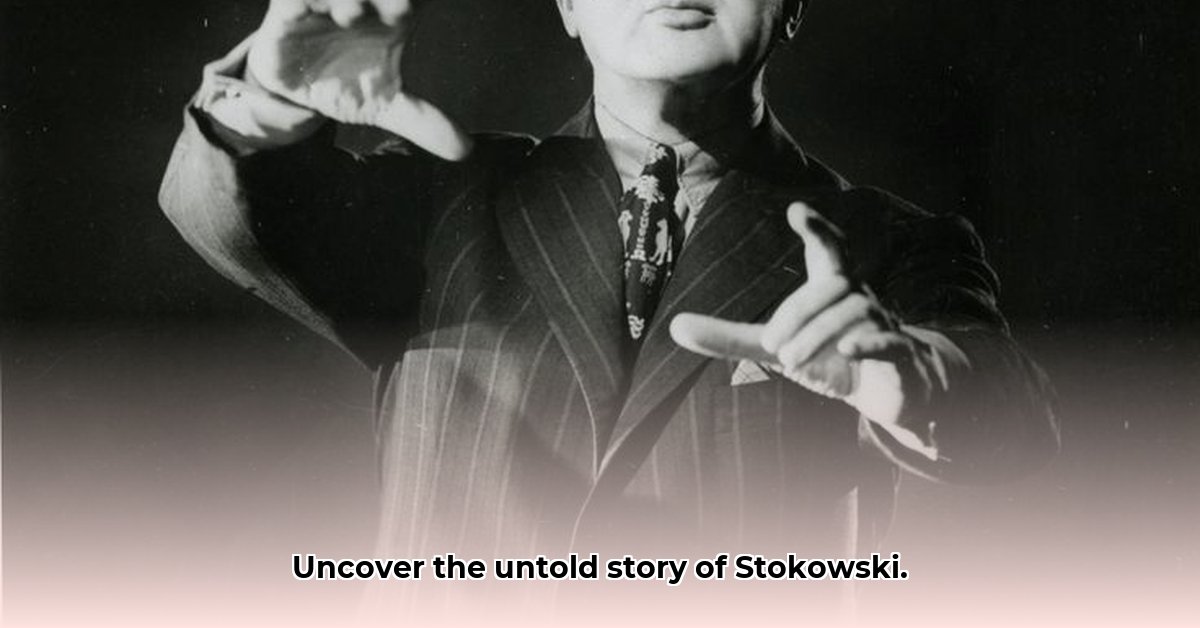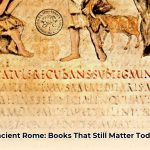Leopold Stokowski, a name synonymous with orchestral innovation and enigmatic charisma, remains a captivating figure in classical music history. His life, a blend of artistic brilliance, shrewd self-promotion, and personal mystery, continues to fascinate and inspire. This biography delves into Stokowski’s journey, exploring his groundbreaking techniques, Hollywood adventures, and the lasting impact he had on how we experience music today. For more on his son, see Leopold Stanislaus Stokowski’s biography.
Leopold Stokowski: A Life in Movements
Leopold Stokowski wasn’t just a conductor; he was a musical innovator, a stage visionary, and a master of self-invention. Unraveling his life story is akin to navigating a labyrinth, where fact and fiction intertwine, enhancing the aura of intrigue that surrounded him. Exploring the background of Leopold Stokowski unveils a life of musical innovation and complex personal choices.
Early Years: London Origins and the Making of a Maestro
Born in London on April 18, 1882, Leopold Anthony Stokowski was the son of Kopernik Joseph Boleslaw Stokowski, a Polish cabinet maker, and Annie-Marion Moore, who was Irish. His birth certificate places his arrival at 13 Upper Marylebone Street (now New Cavendish Street). Stokowski’s given name honored his Polish-born grandfather, Leopold, adding to the rich tapestry of his heritage.
His musical journey began at a young age, nurturing his talent at the Royal College of Music, which he entered at the exceptionally young age of thirteen, establishing himself as one of their youngest pupils. There, he honed his skills in organ performance and choral direction, laying the foundation for his future career. His formative experiences in London, steeped in both Polish and British influences, shaped his artistic sensibilities and fueled his ambition to revolutionize orchestral music. The rise to prominence in classical music was built on strong foundations.
The Philadelphia Sound: A Revolution in Orchestral Music
Stokowski’s tenure as conductor of the Philadelphia Orchestra, from 1912 to 1941, marked a watershed moment in his career and in the history of orchestral music. He wasn’t content with simply conducting; he sculpted sound. He forged what became known as “the Philadelphia Sound,” a rich, lush, and deeply emotive sonic landscape.
He revolutionized the orchestra’s approach to playing techniques. He encouraged “free bowing” in the string section and “free breathing” among the brass players, allowing for a more fluid and expressive sound. He experimented with the seating arrangements of the orchestra, constantly seeking to optimize the acoustics of the hall and create a more immersive concert experience. Stokowski’s innovations extended beyond the purely musical. He transformed the visual aspects of his concerts, incorporating dramatic lighting and staging to create a multi-sensory spectacle. His orchestral revolution changed perceptions of classical music forever.
Stokowski championed the works of contemporary composers such as Arnold Schoenberg, Igor Stravinsky, and Sergei Rachmaninoff, giving them a platform and exposing audiences to new and challenging sounds. This commitment to innovation cemented his reputation as a visionary conductor and secured his place in musical history.
Hollywood Beckons: Fantasia and Beyond
Stokowski’s foray into Hollywood, most notably with Disney’s Fantasia in 1940, propelled him to a new level of fame, transforming him into a cultural icon. He conducted the Philadelphia Orchestra in the film, which paired classical music with animated visuals, introducing the genre to a broader audience.
Fantasia wasn’t just a film; it was a groundbreaking fusion of high art and popular entertainment. Stokowski’s collaboration with Disney demonstrated his commitment to making classical music accessible to all, regardless of their background or musical knowledge. The making of Fantasia was a perfect example of his vision and drive.
Later Years: Houston, New York, and a Lasting Legacy
After leaving the Philadelphia Orchestra, Stokowski continued to conduct and promote music around the world. He served as music director of the Houston Symphony Orchestra from 1955 to 1961 and founded the American Symphony Orchestra in New York City in 1962. Even in his later years, Stokowski remained active and innovative. He continued to champion contemporary composers and to experiment with new approaches to orchestral performance. He had a strong commitment to inspiring future generations of musicians. He actively fostered a love of music in young people, working tirelessly to promote music education and to nurture the skills of promising young musicians. This dedication to mentoring and fostering the next generation solidified his legacy as a true musical visionary, ensuring the future of music education.
The Conductor’s Style: Free Hands and Showmanship
Stokowski’s conducting style was as distinctive as his personality. He famously abandoned the baton in the late 1920s, preferring to conduct with his bare hands. This allowed him to shape the sound of the orchestra with greater precision and expressiveness. His hands became his trademark, capable of drawing subtle nuances and dramatic swells from the musicians. Stokowski also embraced showmanship. He understood the importance of creating a visually engaging concert experience. He experimented with lighting, staging, and even his own appearance to enhance the drama and excitement of his performances. Stokowski’s flair for the theatrical was not mere vanity; it was a way to connect with audiences and bring them deeper into the world of the music.
A Complex Legacy: Genius and Controversy
Leopold Stokowski’s life remains a subject of debate. He inspired generations of musicians and music lovers, but he also faced criticism for his ego, his showmanship, and his sometimes unorthodox interpretations of the classics. Despite the controversies, his legacy of Stokowski endures.
Stokowski died on September 13, 1977, at the age of 95, leaving behind a vast discography and a legacy that continues to inspire and provoke. His story continues to resonate, reminding us that even the most iconic figures are rarely simple.
Unanswered Questions: Stokowski’s Enduring Enigmas
| Question | Potential Answers | Areas for Further Research |
|---|---|---|
| What drove Stokowski’s relentless ambition? | A deep love of music, a desire for fame, or a combination of both. | Psychological profiles, personal letters, and biographical accounts. |
| How did he balance artistic integrity with showmanship? | He saw showmanship as a way to connect with audiences and promote music. | Reviews of his concerts and recordings, interviews with musicians and critics. |
| What was the true nature of his personal relationships? | Accounts vary, suggesting complex and sometimes strained relationships. | Family correspondence, legal records, and biographical accounts from multiple perspectives. |
| What motivated his constant reinvention of himself? | A desire to stay relevant, a need for attention, or a restless artistic spirit. | Analysis of his public statements, interviews, and career choices. |
The multifaceted legacy of Leopold Stokowski continues to intrigue and inspire. His life serves as a reminder that true artistry often comes with a healthy dose of audacity, innovation, and a willingness to defy expectations. Exploring these complexities illuminates the mysteries of Stokowski’s life.
Leopold Stanislaus Stokowski: A Life Apart from the Limelight
Leopold Stanislaus Stokowski, born to Gloria Vanderbilt and Leopold Stokowski, chose a path far removed from the public eye lived by his parents and half-brother, Anderson Cooper. He built a life of quiet accomplishment in landscaping, a choice that speaks volumes about his desire for privacy and independence. Though his family lived in the spotlight, he chose a life of quiet accomplishment.
Key Takeaways:
- Leopold Stanislaus Stokowski, though born into fame, sought a different path in landscaping.
- Verifying details of his life requires careful cross-referencing of sources, given his preference for privacy.
- His story underscores the complexities of familial legacies and individual identity.
The Private Life of Leopold Stanislaus Stokowski
Unlike his famous relatives, Leopold Stanislaus Stokowski has maintained a low profile, making information about his life scarce. To understand his choices, it is essential to acknowledge his individual identity that sets him apart. How to verify conflicting accounts of Leopold Stokowski’s early life is key to understanding him as an individual, not just a member of a famous family.
The Challenge of Verification
The lack of readily available information presents a unique challenge. To gain insight into his life, a rigorous approach to verifying the limited information is necessary, ensuring accuracy and reliability. This requires rigorous verification to build a clear picture of his life.
Step 1: Source Evaluation. Begin by identifying reliable sources. Family biographies, news articles, and reputable online databases can provide basic information that also confirms his individual identity.
Step 2: Cross-Referencing. Compare information from multiple sources. Look for consistent details to establish core facts. Discrepancies should signal the need for further research.
Step 3: Understanding Context. Consider the broader historical context. Leopold’s life unfolded against the backdrop of the Vanderbilt family’s legacy and the high-profile careers of his parents and half-brother. Understanding their influence helps interpret his choices.
Step 4: Respecting Privacy. Acknowledge the limitations of publicly available information. Leopold Stanislaus Stokowski has made a conscious decision to live a private life, and it is important to respect his wishes.
By employing these strategies, it is possible to gain a more complete understanding of Leopold Stanislaus Stokowski, not just as a member of a










